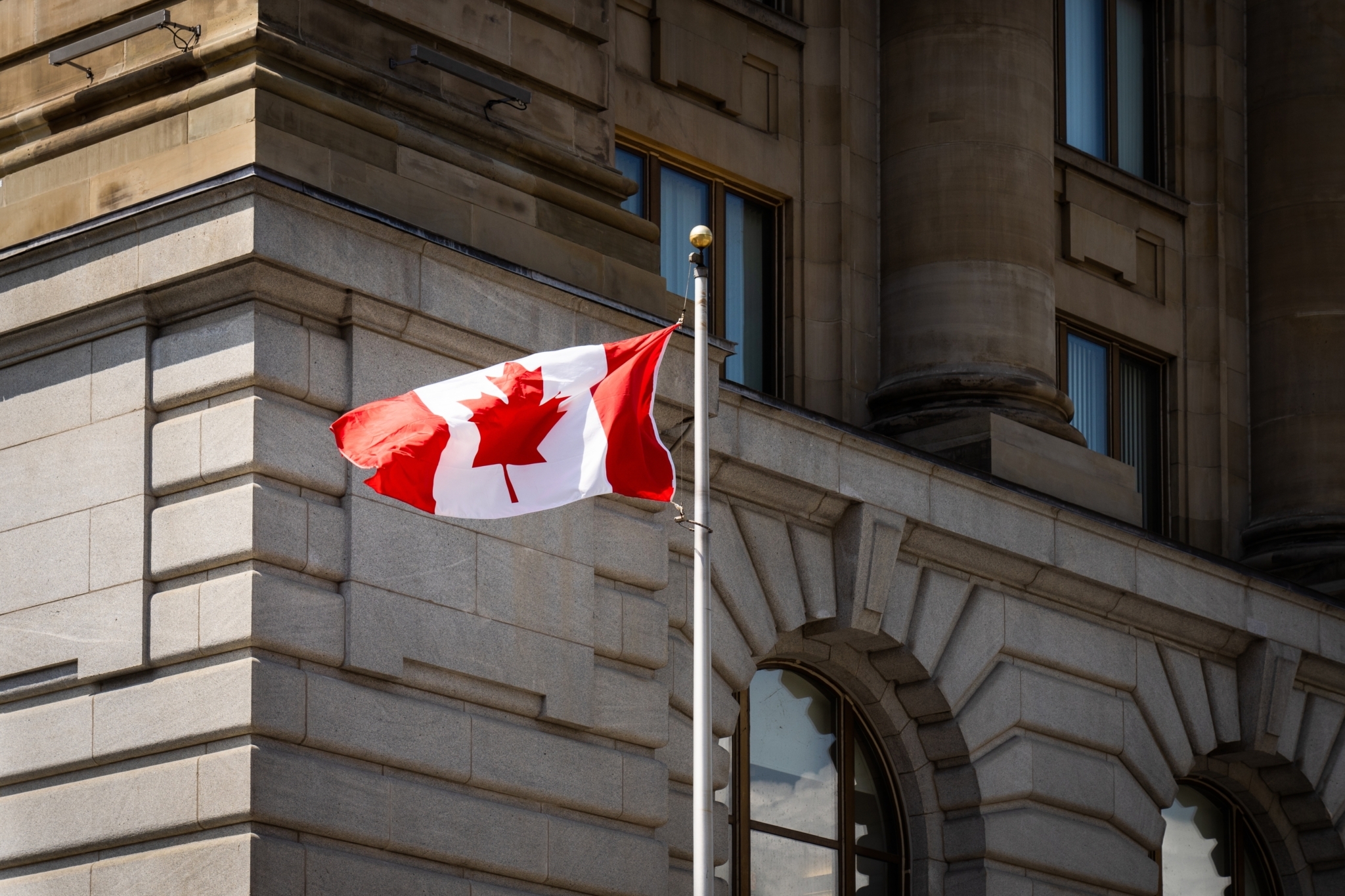May 20, 2025 | Quiet Counsel | 7 min read
Reading the "T" Leaves
As I sit down to write this edition of Quiet Counsel, it’s shocking to realize it’s only been a little over six weeks since the “Liberation Day” tariff announcements sent global economies and markets into a tailspin. For our team it’s become a daily task to remain current on the state of US trade policies. While April 2 shocked the rest of the world, Canada’s position largely returned to pre-tariff times – after weeks of speculation had spiked anxiety here. That initial barrage of punishing global tariffs were walked back less than a week later, with the conspicuous exception of China, which faced tariffs of 145% before the White House once again chopped them in recent weeks, to a more manageable 30%. For their part, the Chinese dropped their retaliatory tariffs to 10% from 125%. It’s hoped that in the interim days before this hits the presses, this - what passes for calm – remains accurate!

Given nobody really knows for sure what may come next, the best we can do is draw on our experience of how markets respond to this type of uncertainty; calculate the potential direct and indirect impacts on securities we both own and/or would like to; steel our resolve as prices dive; and act with resolve when the opportunities arise.
A few weeks ago, we published Leith Wheeler Explainer Series: Trade Deficits to help our clients understand this concept, which President Trump has offered as a rationale for his dramatic policies. In this article, we will highlight what we see as his three central motivations.
What are the US administration's likely goals for the tariffs?

Use as Negotiating Tool. In the opening paragraph above, I described the current 30% US-China tariffs as “manageable.” Against the backdrop of levels nearly five times those levels, they do indeed appear more sanguine. This is by design. By threatening economic Armageddon, the White House anchors its trade partners on the worst-case scenario and by then offering grace, appears reasonable in its final demands. This is Trump’s first goal: to use tariff threats to bolster his negotiating position for everything from better trade terms to access to critical minerals to military access to key strategic geographies (think: Canada’s north, Greenland).
Protect Certain Industries. While the terms of the US-Mexico-Canada trade agreement are largely being honoured again, the US has maintained punitive tariffs on our steel, aluminum, and potentially our autos (the latter remains a matter of debate between Washington and Detroit). Globally, it is also targeting pharmaceutical and semi-conductor exporters. These industries are all considered strategic for the current administration so it is using tariffs as a way of improving US competitiveness in them. In addition to tariffs other countries are levying on US, they consider domestic value-added taxes such as Canada’s GST – for which the US has no equivalent – as anti-competitive for US exporters. The end goal for their own tariff policies is to “level the playing field” to help US firms achieve dominance in their strategic sectors by impairing the economics of exporting into the US.
Generate Revenue. Trump and the Republican party were elected on a platform to reduce US debt. The President is also keen to fund a renewal of a large tax cut that he implemented in his first term, that is set to expire later this year. These are hard to do simultaneously as the money has to come from somewhere. A national sales tax would be a hard sell but raising the price of goods at the till – indirectly through tariffs – provides government revenue with less political blowback. This is the third goal of the tariffs: to generate revenue with minimal cost to political capital.
An astute observer of these goals will notice that they are not all achievable simultaneously. If you hike tariffs you can potentially drive industry back to the US and collect a nice stream of revenues, but all-carrot-and-no-stick gets you nowhere on other strategic goals. If you treat tariffs only as a negotiating tool and ratchet them back down once you’ve achieved other concessions, you no longer collect the revenue, nor protect US industry. A good plan would set priorities within the three, and balance the rollout to maximize what matters most. We’ll see in time if this has been considered.
How do the tariffs actually work?
Consider this example:

The end result:
- The government collects a 10% tax on all widgets and puts the money in General Revenue
- US consumers pay 8% more for their widgets and blame France (the White House hopes)
- Inflation rises. Depending on how far, it could trigger contractions in consumption (possibly to recessionary levels) and a need for the US Federal Reserve to increase interest rates (remember 2022?)
- Bob’s profitability falls 2%, meaning he has 2% less to invest in growth, fund capital expenditures, and pay his employees more
- France may levy counter-tariffs on US widgets, lowering Bob’s export volumes and/or profitability
- Long-term, theoretically, widget makers could opt to open plants in the US to circumvent the tariffs and the US manufacturing base would expand. In practice, for low-cost countries like Vietnam, a 10% tariff would not be a big enough incentive to do this
The Strength of Resolve
Whether they align with our interests or not, these three goals offer a view of the Trump team’s possible motivations. The next question becomes: how well are they executing? Core to this strategy is a willingness to endure pain in service of the longer-term objectives. On this measure, it appears – not well.
Market Pressures
The administration appears to have underestimated the market’s view of the tariffs. Six days after Liberation Day, it capitulated and (ex-China) replaced the big increases with a blanket 10% tariff as part of a 90-day pause on April 8. During that time, Canadian and US stocks fell 11% and 12%, respectively, as investors slashed profit growth forecasts and began worrying about the real potential that it could trigger a global recession. The so-called “Magnificent 7” large cap US technology stocks felt it more dramatically than most, falling 28% to their lowest point before rebounding with the rest of the market – a strikingly similar response to when the US levied tariffs on China in 2018.
Figure 1: US Stock Market Performance Year-to-Date 2025 (S&P 500 C$)

Other Pressures to Capitulate
While Canada was largely given a reprieve on April 2, this followed weeks of rhetoric from Trump that promised a full trade war with their/our biggest and oldest ally. Canadians were justifiably outraged and fearful. Canadians axed US travel and started paying attention to where their produce was grown. They started talking up global non-US trade. (Less laudably) they booed at hockey games. It’s possible that Canada’s vocal response nudged the US back from pursuing its “Factory USA” model, in favour of the final “Factory North America,” which includes Canada and Mexico in the mix. Score one for assertive diplomacy.
On the corporate front, the announced 25% tariff on foreign-produced auto parts has not yet been implemented. One reason is the technical difficulty of parsing out what counts as foreign content when cars are manufactured in Ontario and exported to the US. Another is political pressure created by Detroit’s Big 3, who’d begun announcing planned price increases for their line-ups. Shortly after, the US took >100% off of its Chinese tariffs. The auto parts tariff remains sidelined.
In responding to the economic impact of the tariffs on their businesses, US retailers have recently started announcing their own plans to hike prices – which creates more widespread pressure. One recent report suggested 54% of US companies plan to increase prices to accommodate the tariffs. After seeing the vociferous rebuke by the President after Walmart announced prices would rise, Target
practiced some PR diplomacy by suggesting price hikes would be a “last resort.” It seems 30% on Chinese goods and 10% on nearly everything else remains a large hurdle.
The common denominator here is the upward pressure on inflation that tariffs represent – something Republicans lobbied on correcting. We’ll see what impact the latest volleys from corporate America have on trade policy.
What is the state of US tariffs today?
- We are currently in the 90-day pause on the US’ global tariff regime.
- All countries outside China, Canada, and Mexico have a blanket 10% tariff applied to all goods imported into the US. The President reaffirmed last week that the 10% global tariffs will be a “baseline” irrespective of what other trade deals the US strikes.
- Canada faces additional tariffs of 25% on aluminum and steel exported to the US, plus goods that fall outside the scope of USMCA. The latter’s penalty will fall to half that if/when Canada can prove it’s addressed concerns about fentanyl smuggling. Auto parts may also be subject to 25% tariffs; these are suspended for now.
- China currently faces 30% tariffs on goods exported to the US and China maintains 10% tariffs on US goods.
- The US relaxed some tariffs on Chinese-manufactured phones, laptops, and other electronics in April, to enable Apple, Nvidia and other US companies to source parts.
- President Trump also announced a UK trade agreement which lowered the tariff on UK car imports into the US from 27.5% to 10% and removed special tariffs on steel and aluminum in exchange for better access for US beef and ethanol exporters to UK markets. The White House has pointed to 24 other deals that are in negotiations.





